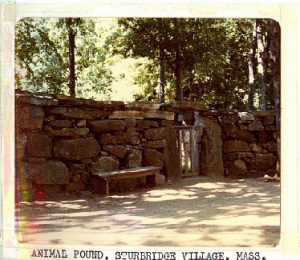In the Town’s earliest days 1784-1799, American currency had not yet been fully established. The First Bank of the United States was not chartered until 1791, and the Coinage Act in 1792, and the era of a national American currency took a number of years to take hold. Many transactions during this period still relied on English pounds, shillings and pence, though Spanish Silver Dollars were also still in common use.
King Henry II had established the English monetary system which remained in use until 1971. The British pound (in sterling silver coin) was equal to twenty shillings. There were twelve pennies to a shilling. To put that in better perspective, according to one economist, the 1800 British Pound Sterling was equal to $4.44. U.S.
Consider then, the costs experienced in our Town in its earliest days shortly after the American Revolution at the close of the 18th century. The Town recorded the earliest problem it had to deal with, other than general governance and roads, was livestock loose and roaming the Town roads. In 1788, Freeholders and inhabitants voted “That any person within this District shall at Liberty to cast and cut any seed horse or Stallion that may be found running at large after the first day of May nex a provided such horse shall die in consequence of being cut the owner shall bear the loss.” The next year, five pounds were approved to build an animal pound. Not long after, voted April 1793, “That Eight Pounds currency be raised for building a [animal] Pound to be set near the Court House.” Perhaps they needed more space, or the previous Pound was inadequate.

The building of a pound apparently didn’t solve the problem because it was voted in 1792 to define a “lawful” fence for livestock owners and establish fines on the owner of forty shillings for each animal running at large, Proceeds of the fine were to be split, “One half for the use of the Town and the other half for Complainer.”
Then, in June 1795, “Voted by the unanimous consent of the People that the sum of Twenty six pounds be raised from the Estates of the Freeholders and Inhabitants of this town, the present year for the benefit of schools.”
I’ll do the math. Twenty six pounds x $4.44 = $115.44. One has to wonder what the residents might expect from such an investment in their school.
That same meeting approved Three Pounds, Ten Shillings be raised to “finishing & completing the Pound: to get lock & key to the workman who builds said Pound”.
In April, 1796, it was voted to raise Twenty five pounds by tax to finish the Court House. It is unfortunate for us that the record does not specify what finishing the court house entailed. In that same session, “the town receive four dollars for purpose of procuring a blank book to keep the Records of the Town in…”
Judging from the comparison, it would appear that a paper record book was quite expensive at the time.
###

You must be logged in to post a comment.